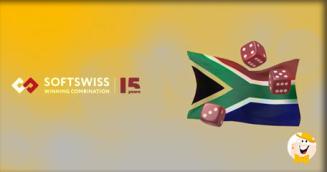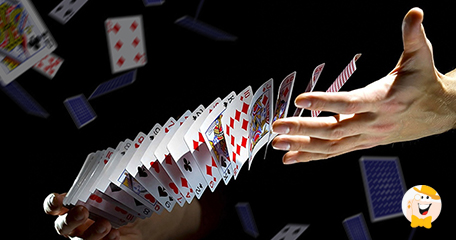
If I am to offer any advice on gambling, it is usually advice pertaining to actual advantage play and how to win, whether the winning is in an online casino or a brick-and-mortar casino. For this editorial, I want to discuss some of the best games to play (at a negative expectation) if you want to make your buck last longer. For me, personally, this would only apply to land-based establishments (of one kind or another) as those are the only locations at which I do any negative expectation gambling, but these same tips can also be applied to online casinos.
When deciding on a game to play in a physical location, there is actually more to making your money last longer than looking at the house edge alone. The most relevant metric, in my opinion, is looking at the expected loss per hour. The expected loss per hour (which I will term the, ‘Hourly,’ throughout the remainder of this editorial) is going to be predicated upon both the house edge and how much a player is betting. For example, a $100 minimum Blackjack game (without counting) is going to have a greater hourly than a $5 minimum double-zero Roulette game. This is true even though, in terms of expected value, (RTP) the Roulette game is probably more than six times worse.
Furthermore, this editorial is also going to count on the player doing a few things to benefit themselves. One example is playing at least basic strategy on a game like Blackjack. Players who play inferior strategies such as, “Assume a Dealer Ten,” or, “Mimic the Dealer,” increase the edge against them exponentially.
One might think that playing tables over machines is going to decrease the expected loss per hour, but that is not even remotely true. Once again, the combination of the house edge and how many bets are being made in an hour is what contributes to the hourly. If the bet amount is low enough, and the player plays slowly enough; then the player will lose less per hour on virtually any machine game as opposed to a physical table game due to the minimum bets on tables.
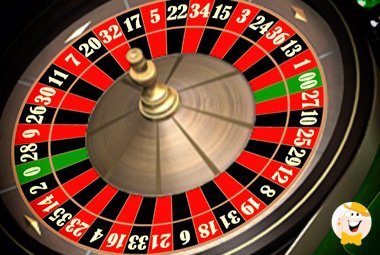
Naturally, the player is going to have to strike a balance between slow-playing and low-playing as compared to capturing some degree of excitement. This will be easy for a person who loves, “Social Slot Games,” because there is no actual betting on those anyway.
Slots, Video Keno, Video Poker:
When it comes to the House Edge, Video Poker is going to be almost universally better than most slot machines or Video Keno games when played correctly. However, some VP paytables are so bad as to offer a worse RTP than some slot games or VK, even when played correctly, but that is rare.
When it comes to hourly, one thing to keep in mind about VP is that a player will generally have to max bet to not get, “Short-Coined,” on the Royal. Getting short-coined means being paid a lesser amount for a Royal Flush relative to your amount bet. For instance, on most standard VP paytables, a Royal Flush pays 800-FOR-1 on a five credit bet and 250-FOR-1 on a bet less than that.
In addition to the question of paytable, the expected hourly loss of a VP game is also predicated by the denomination played and how quickly one is playing. For example, if one looks at a game such as, ‘Airport Deuces,’ with a 98.91% return (pretty good game) betting $1.25/hand and playing 800 hands per hour yields an hourly of $10.90. Of course, that could be offset by offers and slot points, but that’s what it is in terms of the base game.
Interestingly enough, while I would never advise short-coining, short-coining does come in with a return of 97.6864%. Betting only $0.25/hand, therefore, would yield an hourly of $4.63.
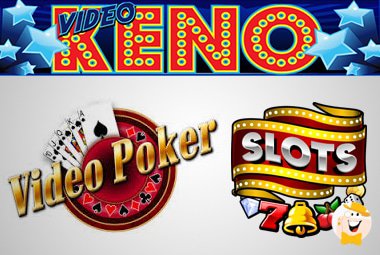
In addition to hourly, another thing that I sometimes look at is how many, ‘Hands down,’ someone is. For example, if one put $100 in and played 800 hands, then they would only have to be eighty hands down (at any point) to have lost the $100. In comparison, to put in $100 and play 800 hands at $0.25/hand would require a player to be 400 hands down, which simply isn’t going to happen.
When it comes to overall expected value, then not short-coining is an obvious choice, but that may not be what is necessarily best for hourly and longevity. Once again, with a game such as 98.91% Deuces, there are several casinos at which an overall edge can be had for the player combining points and offers, (depending on the strength of the mail) and it can not be emphasized enough that I do not advise short-coining. It makes the return of the game more than twice as bad.
The last bit of advice I have when it comes to Video Poker is to play competently and also to play within your bankroll. If you have $500 to play with and your choices were 99.54% 9/6 Jacks or Better vs. the Deuces Game on quarters, but the JoB was $5 denomination and the Deuces was $0.25, I’d almost have to recommend the Deuces. The player would only have a twenty unit bankroll on the JoB and could find himself tapped out after ten minutes.
Slot machines and Video Keno are going to be almost universally worse than Video Poker regarding RTP. The only exceptions to this are an almost unbelievably good VK game, an almost unbelievably bad VP game or slots at or near a positive expected value. Since we are not talking about advantage play here, we are going to ignore the +EV slots for the time being.
The only real hourly savings that are going to be possible with VK or Slots is that there are some machines where it is possible to bet as little as one penny, though these machines cannot be found (on VK) in every casino. If a person looks around long enough, however, it is hardly unusual to find a slot machine upon which one can play one line at $0.01 per line. Even if we assume a RTP of only 80% and 800 spins per hour, the hourly is only going to be $1.60. The same applies with the Keno, except it is easy to use the WizardofOdds Keno Calculator to determine how much the VK game returns.
In any casino, I have ever visited there have been VK games upon which as little as $0.05/card can be played. If we assume a return of 90% on those, then the 800 games per hour would yield an hourly $40 in total bets. The expected loss per hour, given that, is actually $4.00 Interestingly enough, that is barely less than short-coining the DW game for $0.25/hand, even though the player is betting five times less per hand.
In most cases, the amounts described would also be insanely boring to play and I cannot imagine walking into a physical casino with little enough money that these sorts of methods of playing would be my first choice. The only exception that I can personally think of is if I am playing for free drinks and they are going to let me play that low and still be served. In that case, I would probably be playing Caveman Keno (or something along those lines) at $0.10/card just for fun. It’s mainly because, if I’m playing such low stakes, I don’t care whether I win or lose.
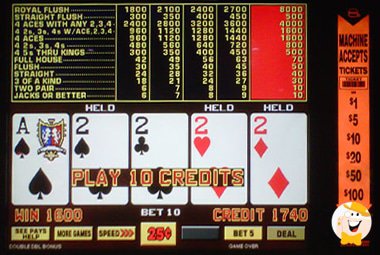
By and large, the single biggest factor in achieving a low hourly on machines is the denomination and number of credits one is betting, the House Edge (or RTP) is almost secondary in that regard. One thing to keep in mind, of course, is the longer one plays at a negative expectation game, the closer one comes to almost being guaranteed to lose. While that is considered a function of the RTP (generally), it can also be somewhat considered a function of how many attempts at the game are made. If you have a game that has a house edge half that of a different game, but you play that game more than twice as much, (in terms of total amount bet), then you will be expected to lose more on the game with the lower house edge.
There is also a certain, ‘Excitement,’ factor that may be predicated upon the ability to hit a sizeable win or to be betting an amount that is meaningful to the player. In my case, I can play VK, ‘Losing a dime at a time,’ just because I legitimately enjoy the game. I don’t care that I am extremely unlikely to win anything substantial, I’m basically just enjoying the free drinks.
For anyone who prefers machines to the tables and wants to bet more than the bare minimum, then I would suggest printing off a proper strategy and find the best VP paytable you can at the lowest maximum bet you can stand. For those of you with an extremely limited bankroll, (or just playing for drinks) hourly may be a consideration.
Some people may laugh at you or think that playing for such small amounts is silly, whether or not you are playing for drinks, but who cares? If the game has a negative expectation, and you’re having fun playing it, then why lose more than you have to?
Another factor to be considered is the speed of play. When one is playing, especially a game that requires no concentration, it is pretty easy just to get into a, ‘Rhythm,’ and play faster than you really have to. It should go without saying, but on any negative expectation game, fewer plays per hour will mean a lower hourly.
Table Games:
Table games are interesting to consider for hourly because they are played at a much slower pace than machine games, with virtually no exceptions. They also provide another example of games in which less may be lost per hour on games with a worse RTP, again, due to the pace of the games. While there are those who believe that the pace of table games is pretty much set, players are actually able to control the pace of certain games to some extent.
There are several games in which a player can make decisions and can spend any amount of time, within reason, to decide what he/she wants to do. Examples of games such as these are Let it Ride, Blackjack, Pai Gow Poker, Mississippi Stud and Three-Card Poker, though there are several others. Even though 3:2 Blackjack often has the lowest House Edge in the casino, it is one game in which your fellow players may be less than polite to you if you slow the game down too much. That is also likely true of 3CP, though to a lesser extent.
For experienced players, games such as LiR and PGP are expected to be pretty slow moving, anyway, so they will generally not mind if you take your time playing the games. “Table chatter,” between the players and dealers is also quite common in those games, as well, so that also contributes to a more recreational pace.
Craps is naturally a fairly slow-moving game, particularly if one is just playing the Pass Line or Don’t Pass, because there is not a resolution on every roll. Not only do single-roll (or other multi-roll) proposition bets tend to have a worse RTP, it will also speed the game up if there are more resolutions. Craps is also an example of a game that you can’t really slow down too much, unless you are the only one at the table. Even if you are the one with the dice, the dealers will often begin to hurry you along if you are taking too much time about rolling.
As with the machine games, my perspective on table games is: If you’re playing a negative expectation game, anyway, then why lose more? As long as you enjoy the game that you are playing, then I see nothing wrong with (as a recreational player) focusing more on the loss-per-hour than on the house edge.
I’m going to borrow the following table:
Hands per Hour and Average House Edge
| GAMES | HANDS/HOUR | HOUSE EDGE |
| Baccarat | 72 | 1.2% |
| Blackjack | 70 | 0.75% |
| Big Six | 10 | 15.53% |
| Craps | 48 | 1.58% |
| Car. Stud | 50 | 1.46% |
| Let It Ride | 52 | 2.4% |
| Mini-Baccarat | 72 | 1.2% |
| Midi-Baccarat | 72 | 1.2% |
| Pai Gow | 30 | 1.65% |
| Pai Pow Poker | 34 | 1.96% |
| Roulette | 38 | 5.26% |
| Single 0 Roulette | 35 | 2.59% |
| Casino War | 65 | 2.87% |
| Spanish 21 | 75 | 2.2% |
| Sic Bo | 45 | 8% |
| 3 Way Action | 70 | 2.2% |
From our sister site.
It is important to keep in mind that the, ‘House Edge,’ section in that table does not necessarily reflect the lowest House Edge bets, but is what is sometimes used for rating purposes. To wit, the House Edge in Craps on Pass Line or Don’t Pass bets is much lower than that. Furthermore, players who Take/Lay Odds on their Pass/DP bets will also see a reduced house edge against them if they take that into consideration. It is important to remember than many houses do not consider Odds Bets in comps calculations, however, so they may be a wash all around.
The table above is also based on an, ‘Average,’ number of players playing, as far as hands per hour is concerned. Unless you are deliberately playing somewhat slowly, a table with only yourself or one other person will generally move somewhat faster than what is described above.
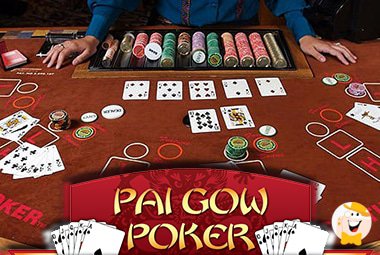
In terms of a baseline, a simple formula can be used to determine the expected loss per hour:
(Hands Per Hour) * (House Edge) * (Minimum Bet) = Hourly
For one example, let’s say I am playing PGP at the stated hands per hour and house edge with a $5 minimum bet:
34 * .0196 * 5 = $3.332
As we can see, the Pai Gow Poker, despite the greater minimum bet, has a lower expected loss per hour than playing Video Keno a nickel at a time at 800 hands per hour! Pai-Gow Poker is also a game in which I have often played even slower than that, especially when alone with a chatty dealer. I have played the game as slowly as twenty hands per hour.
For low-bankrolled players, the $5 minimum bet (or similar bet) may seem intimidating, but that is where it becomes important to remember that the payouts of the game (mostly even money) result in a game with much less volatility. Even with a game such as Blackjack in which a player can Split up to four hands and theoretically double them all, (if allowed) the greatest possible win is 8x the initial bet.
When it comes to Ten-Spot Keno, in many games, 20% of the overall RTP (or more) is often concentrated on hitting seven or more numbers. Considering hitting seven numbers of ten is about 1 in 621, and more numbers than that are even longer odds, Keno is a game in which a player will not usually run close to even over a limited sample.
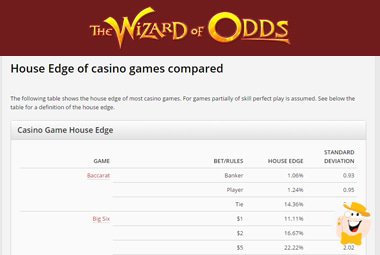
Some players are going to want the thrill of possibly having a huge win, though, and that is not going to be had playing even money games such as PGP. While a player is able to play for a long time, the player is unlikely to win many more times his/her buy-in. This is especially true when one’s buy-in is much larger than one’s average bet amount.
Many Table Games have side bets in which significant amounts can often be won, relative to the bet amount. However, the phrase, “Side bets are sucker bets,” exists for a reason. Even combining a low house edge table game with a modest $1 side bet can result in a greater hourly expected loss (despite playing fewer hands) than the game of Video Poker taken alone.
Many of the side bets with the largest potential individual payouts can have House Edges ranging anywhere from 7% to over 20%, and this is especially true of the huge Progressive jackpots out there.
It would take way too much time to go through all of the side bets and look at them combined with the House Edge of the base game individually. However, if there is a jackpot bet with a bet amount of $1 and a house edge of 20%, then the player is expected to lose $0.20 on that alone. It would take almost fifteen hands at 98.91% DW to have that sort of expected loss. Of course, that ignores whatever the bet amount is on the base table game, as well. In other words, if the player made more than 53 such side bets at the table game (ignoring the expected loss on the base game) the player would lose less per hour playing 800 hands of Video Poker.
Skilled v. Unskilled:
Making the right plays is essential for maximizing the RTP in both Video Poker and most Table Games, though, so it is important to have a strategy card when you play. If the strategy card reflects less than an Optimal Strategy, then it is also important to understand the effect that the less than perfect strategy may have on the house edge.
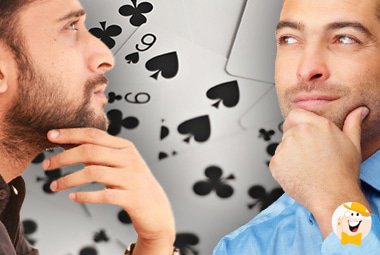
If you are looking to minimize your expected hourly loss at the tables and want to play a brainless game, then betting Banker at Baccarat and one of the line bets at Craps is the easiest way to do that. However, some casinos may have a novelty game such as $1 Roulette, and in those cases, a player might enjoy a reduced hourly even compared to $5 Craps.
Conclusion:
Whether it be controlling bet amounts, the speed of the game or playing the game with the best RTP, there are several ways to ensure that the expected loss per hour you face is minimized. There are those that would advocate in favor of playing the game with the best RTP no matter what, but in my opinion, playing the game with the lowest hourly may be best for someone who is playing at a disadvantage.
They say that “In the long run, your money will last longer playing the game with the lowest house edge,” but it is important to remember that is only true on an “All else equal,” basis. If you are betting $100 per decision on a 0.5% House Edge game and have 80 decisions per hour, then the expected hourly loss is $40/hour. Betting $0.05 at a time on a 0% RTP game (even though no such thing exists) at 800 games per hour would also yield an expected (and guaranteed) loss of $40/hour. For that reason, we see that more goes into loss per hour than just the house edge.
Admittedly, such factors may only be of interest to people who want to stretch their money. They may have other considerations such as bankroll, enjoyment, playing for huge jackpots and whether or not they actually enjoy the games. However, if there are a number of games that you believe you will enjoy, determining the expected loss per hour is a really simple matter.




